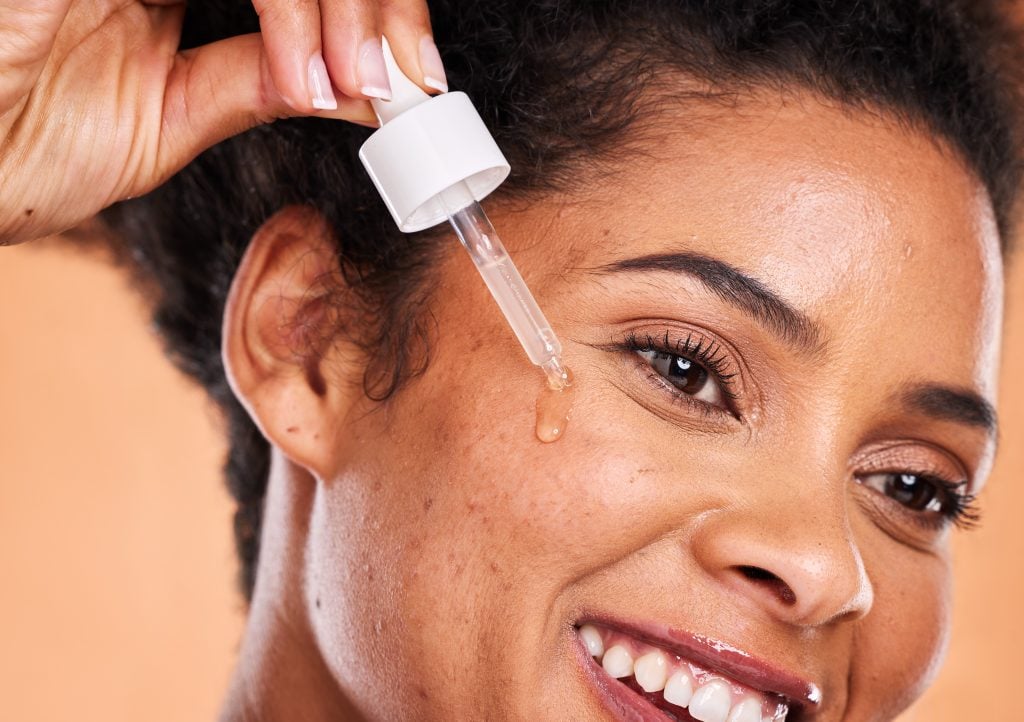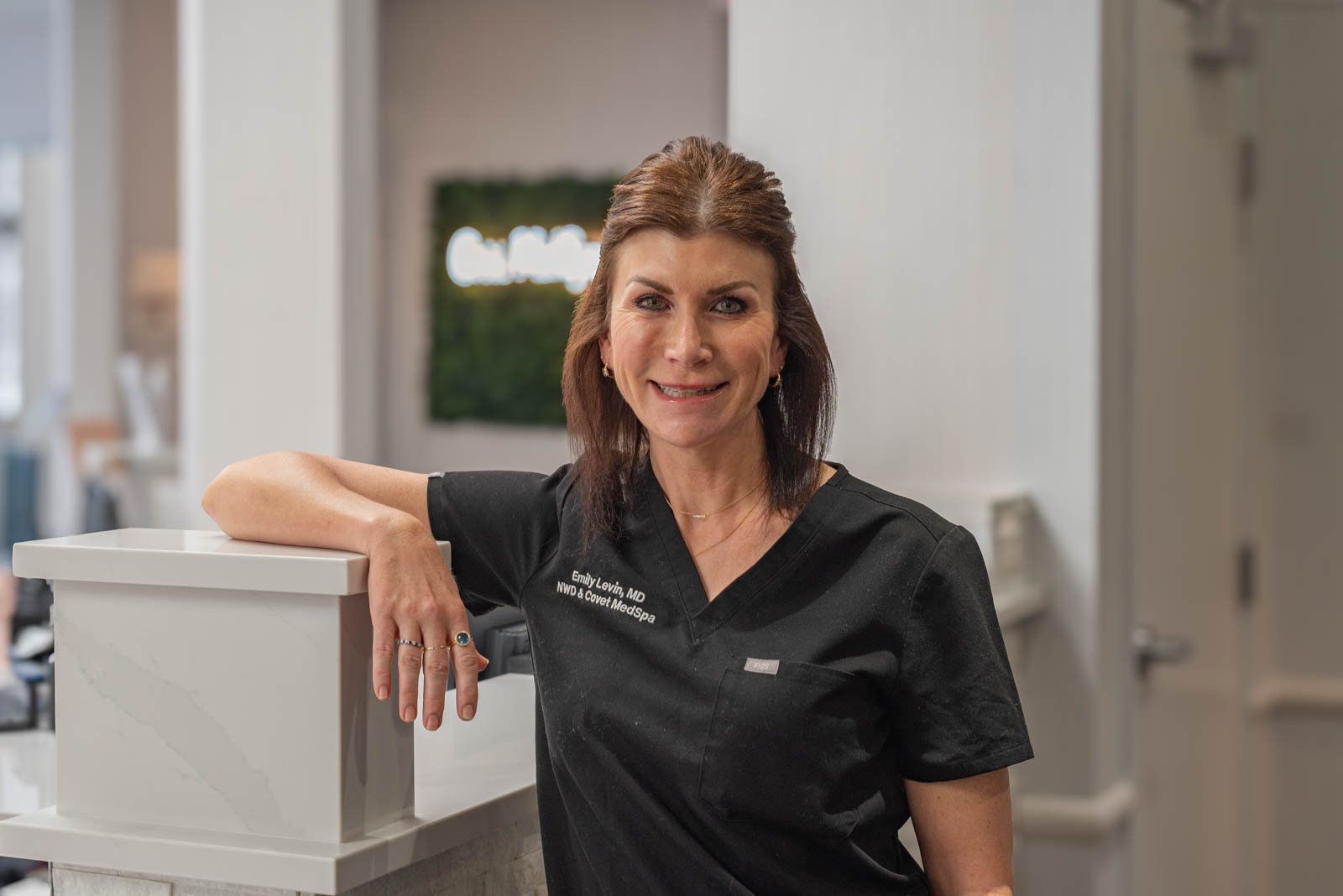Beyond the Hype … Making Retinol Work for You
Luminous. Glowing. Fresh. Shining. Bright. Smooth. Youthful. Iridescent. Toned. Radiant. These avidly pursued skincare characteristics are all attributable to retinol. That’s because retinol truly is the gold standard when it comes to improving the appearance of your skin.
That accounts for the dizzying array of retinol-based creams, gels, lotions, serums, emollients, foams, wipes, and other formulations lining the shelves of beauty supply centers, department stores, drugstores, big box emporiums, and other retailers, and presented in endlessly enticing color online. Marketing claims are often extravagant, promoting results that turn back the clock on aging and promise the fountain of youth. Price points vary from reasonable to yikes.
What we need is a way to cut through the hyperbole and make wise choices about retinol products. Fortunately, we’re offering suggestions so please read on.
Understanding Retinol
Retinol belongs to a broader class of chemical compounds called retinoids; all retinoids are derivatives of one of the body’s key nutrients, vitamin A, which is important for normal vision, reproduction, organ and immune system function, and growth and development. The chemical makeup of vitamin A was isolated in 1931, followed by the identification of various retinoid derivatives and subsequent experimentation with skincare applications. In 1971 the FDA approved Retin-A as a treatment for acne; this first retinoid-based pharmaceutical remains available to this day, along with a number of other by-prescription-only retinoid variations targeting acne and other skin conditions.
But as dermatologists, healthcare professionals, and researchers soon realized, prescription Retin-A also reduced fine lines, dark spots, wrinkles, and other signs of aging. After considerable experimentation (we’ll skip the complicated chemistry involved), that led to the emergence of retinol in the 1980s, a weaker type of retinoid adapted for over-the-counter use. Used aggressively as an anti-aging agent, early products were so potent that rather than improving appearance, they made skin angry, irritated, red, and rough. Understandably, retinol fell into disuse. Still, given retinol’s great promise, work to improve it continued, leading to the emergence in the 2010s of much gentler forms and the subsequent burgeoning of products we see today.
And despite frequent exaggeration of claims, retinol offers real benefits in terms of improved skin texture, fewer wrinkles, minimized pores, and reduced inflammation. By increasing collagen production, retinol yields a fresher, plumper appearance. As an anti-aging agent, it increases the thickness and elasticity of the skin.
Choosing Your Best Retinol Products
Using retinol should be a personal choice, made because a product is best for you and not because everybody else is doing it. For best results, considerations include:
- Think through what you want to achieve regarding your appearance and decide what you can afford to spend. Defining what you want to change and why helps narrow product selection to what is relevant to you.
- Factoring in your skin type so you can match formulations to your oily, dry, combination, or normal skin. If you’re not sure of your type, remember that if your skin appears shiny throughout, you likely have oily skin. If it feels tight and is flaky or scaly, it’s dry skin. If the shine is only in your T-zone (forehead/nose/chin), think of a combination. If your skin feels hydrated and comfortable, you’re normal.
- Understanding how to match retinol products with skin type and skincare goals. You’ll want a different retinol product, for example, to address mild to moderate acne or acne scarring than what’s targeted at anti-aging and the appearance of your skin. Creams and serums are the most common formulations, although other product types exist as well. Cream, gel, and lotion formulas are good for dry skin and acne because they are thicker and leave a residue for continued absorption. Since serums are thin, light, and watery, they absorb deeply into the skin and dry quickly, making them compatible with oily skin. Generally, serums have higher levels of active ingredients than creams and are preferable for targeting specific areas, while creams spread more widely and incorporate moisturizers into the mix.
- Considering your age. Many experts recommend beginning retinol use during your 30s as collagen production starts to slow. Others say your 20s are better at maintaining healthy skin. Later is OK too—50s, 60s, 70s, and beyond, everyone can benefit, especially if you use products aligned with age group since skincare needs change over time.
- Doing online research or talking with your healthcare provider to identify which products might work best for you. Feedback helps you cut through the clutter of choices.
- Reading package instructions carefully before using and following instructions for application leads to desired outcomes.
How to Achieve Maximum Results
Retinols are topical substances, which means they are applied to the surface of your skin, and your skin may need time to adjust. That’s why experts recommend starting slow and small, initially using the product no more than every third day and in tiny amounts. Before using retinol for the first time, conducting a patch test is a good idea. To do that, apply your intended product to a small area on your upper arm; if the skin isn’t red or itchy after a couple of days, it’s okay to add retinol to your evening skincare routine. Follow these four steps.
- Clean your face with a gentle cleanser and pat dry. Don’t scrub, use harsh soaps, or rub.
- Apply retinol in a thin layer, avoiding your mouth, nose, and eyes. Use a dose the size of a pea and spread with upward strokes.
- Allow retinol to totally absorb.
- Finish with a non-comedogenic facial moisturizer that won’t clog pores.
Then, be patient. Seeing results takes a while, from three weeks to as long as six months. Consistency is important, so keep going over the long haul.
Retinol Downsides & Advice
There can be side effects from using retinol, including skin dryness or irritation, itching or burning, redness, peeling, or flakiness; stop using the product if symptoms persist. In most cases, reactions are temporary and clear up as your skin adjusts. You can gradually increase the application to daily or every other day. Some people even apply retinol morning and evening, using both a serum and a cream, but generally, that’s more than you need to do.
Should you have a severe reaction to a retinol product, see your healthcare provider. If results are not evident after several months, you may want to ask him or her to step you up from over-the-counter retinol to a prescription retinoid. That’s especially true with acne that’s severe or persistent.
Women should consult their obstetricians for approval to use retinol while pregnant or breastfeeding. Historically, birth defects were a concern, and while that’s less true given today’s lighter formulations, caution is the way to go. Sun sensitivity can also increase with retinol; using sunscreen and wearing protective clothing is always recommended to guard against harmful UV rays.
Above all, realizing that there is no one-size-fits-all approach to retinol can help mitigate the frustration of sifting through myriad options and choices. Retinols are truly amazing substances that make us look and feel younger by improving the health and vibrancy of our skin. The key to success is figuring out which products best match specific needs and goals.



